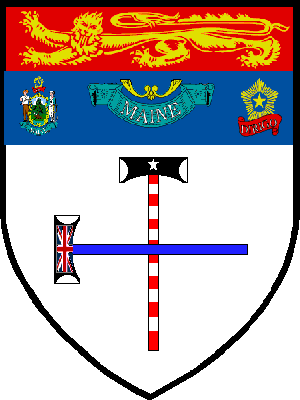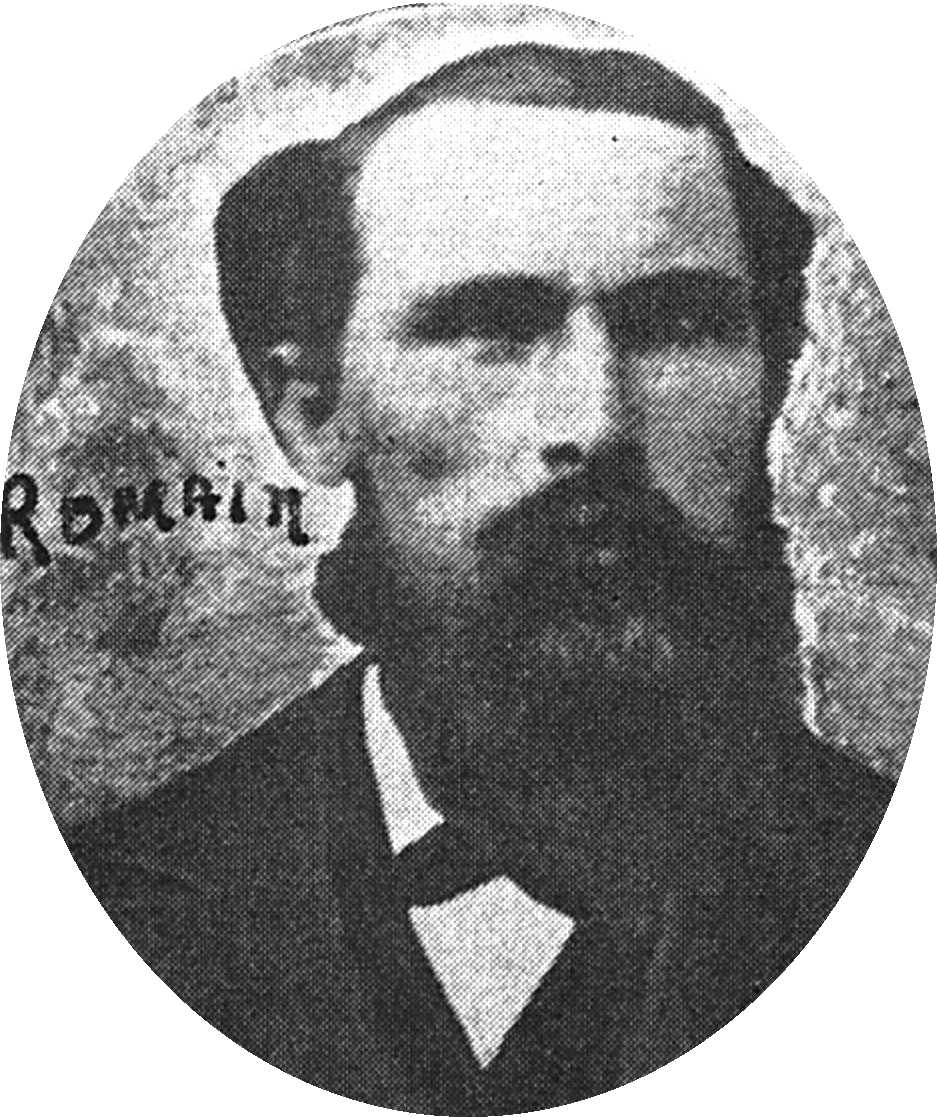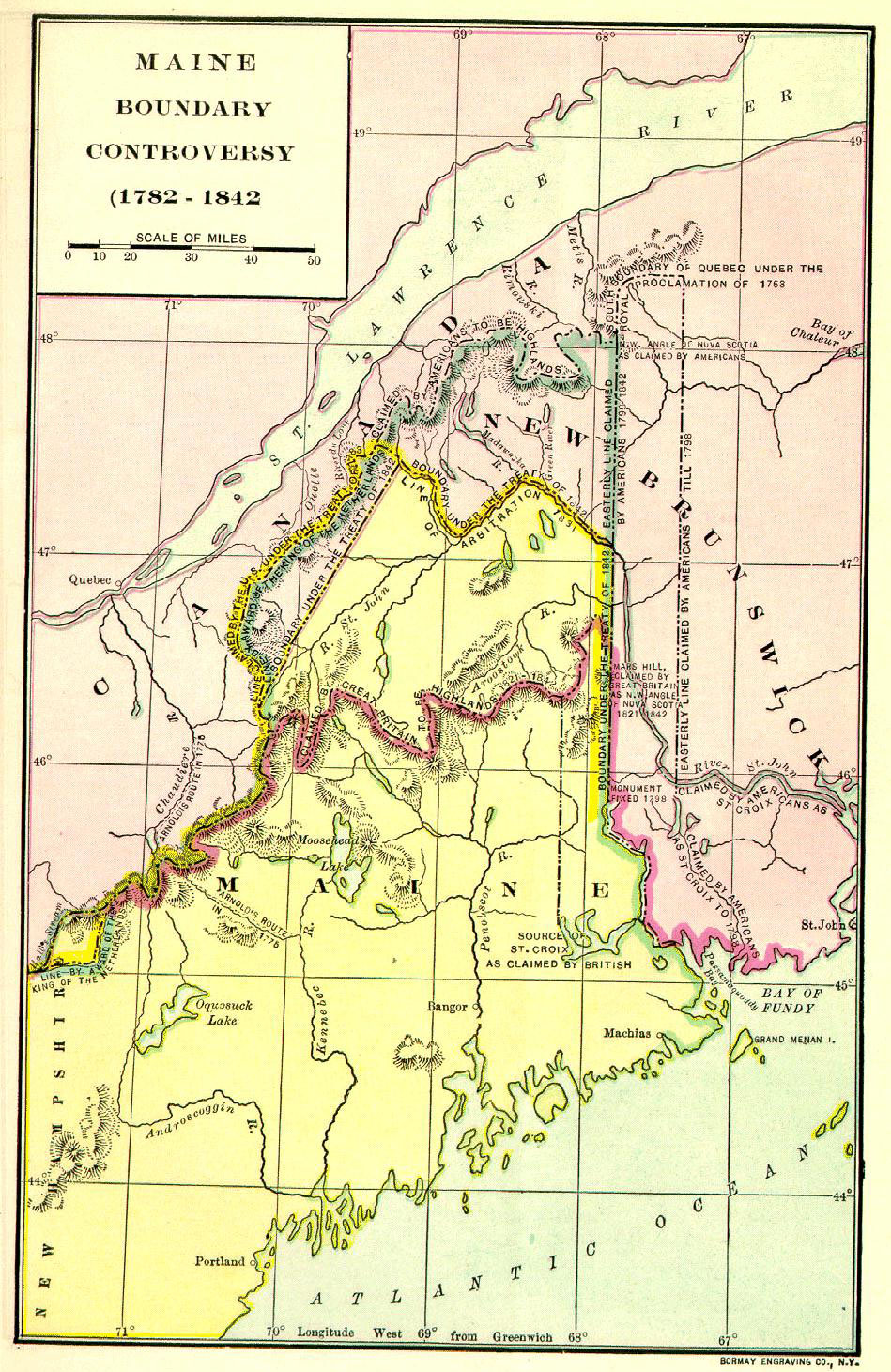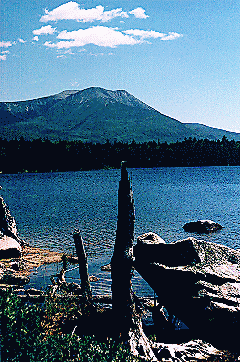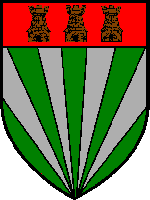![]()
|
![]()
|
Lumber was at the heart of the Aroostook War. The Madawaska territory had it, and everybody wanted it. The treaty ending the American Revolution in 1783 had not clearly defined the boundary between New Brunswick and what is now Maine.
The dispute worsened after Maine finally wrestled its statehood from Massachusetts in 1820. Surveyers were quickly dispatched to the St. John Valley, where they were surprised to find a thriving Acadian community on both banks of the St. John River.
The lands on the south bank of the St. John Valley would be critical in determining whose lumber mills would receive the the lumber from the vast pine forests of the region -- would the rivers flowing north into the St. John be used (favoring the Canadians), or those flowing south into the Penobscot watershed (which favored the Americans). Determined to have American settlers on the land, the Maine state government chose to ignore British claims, and began granting land to settlers in the area. The King of the Netherlands was asked to arbitrate the dispute, but the U.S. Senate, in 1832, rejected his determination of the St. John River as the boundary -- a boundary the British were at the time willing to accept (interestingly, this arbitration would have given Maine more territory than the final negotiated settlement in 1843.
Romain Jean Michaud, had been impressed into British service against the United States during the War of 1812 He moved his family to the Madawaska region before the start of the "war". According to family tradition, "They used to call Upper Frenchville by the Native American name, Chattaqua, which means "Cats Corner". The French families living there were teased about the name, and they got sick of it. That is where Romaine came in. He organized a militia to take care of the English who were coming down the St. John. Although there was never a fight, I guess that sometime it was nip and tuck. I remember my Grandfather referring to the name of Chattaqua with pride...." Further research indicates that this may have been the "other" Romain, the younger son of one of Romain Jean's cousins [I'm still trying to clarify this -- Mazhude]. When a Maine official conducting a census in a disputed border area was arrested by New Brunswick officials, the Maine legislature dispatched a force of 200 men to the mouth of the Fish River in the winter of 1837. Congress appropriated $800,000 and raised a 10,000 soldier militia to support the Maine troops already in place. No shots were ever fired, but soldiers quickly used seized British lumber to built a blockhouse at the mouth of the Fish River. Another blockhouse and boom was built further down the Fish River at Soldier Pond. This blockhouse was burned down by American soldiers when it looked like the British might take it. It is now on Bangor & Aroostook RR property, but once belonged to J.T. Michaud, who received the land from his father, Romain Jean. General Winfield Scott was rushed to the area to broker a deal before things got out of hand between the Maine "Red Shirts" and the New Brunswick "Blue Noses." He suceeded in arranging for a compromise agreement to be made between Congressman Daniel Webster and Lord Ashburton. The border dispute became known as the "Bloodless Aroostook War" and legend has it that the only casualty was either 1) a pig that wandered across the border into Canada; or 2) a cow, shot by mistake, while rustling around outside the Ft. Kent blockhouse. Can't speak for either story, but the records do indicate that, in 1827, Joseph Arnold's cow was taken hostage by the magistrate of Kent, New Brunswick, before being freed by the local "militia." Actually, a number of Americans died as a result of this conflict. For example, most Maine school children could tell you about Pvt. Hiram T. Smith. Smith, of Company F, is buried in Haynesville, on U.S. Route 2 (the Military Road to Houlton), and is frequently cited as "the only casualty of the Aroostook War". Unfortunately, no one knows how he died, although there are a number of legends about it. And, thanks to Rita Stadig, we also know of two soldiers' graves at the side of Soldier Pond [Photos courtesy of Ken Anderson]. Rita researched the site and remarked the graves there. She relates her father reported the two soldiers - unnamed - drowned on the pond while fishing one day. In addition, recent research by Richard Rhoda reveals that a number of men died while stationed at Hancock Barracks in Houlton during or immediately before the "war." These men are all buried on White Settlement Road.
There is one more casualty that I'm aware of. And this one was a civilian. According to "AROOSTOOK, the First Sixty Years," by Clarence Day, "While the soldiers were there [at Fort Fairfield] one morning during target practice, Nathan Johnston was reaping grain on a nearby hill. He was wounded by a random bullet and died the next day. This seems to have been the only fatality even remotely connected with the Aroostook War..." The Webster-Ashburton Treaty gave over 7,000 square miles of the disputed area, including the Aroostook valley, to the United States, and several critical waterways, including the all-important east-west passage of the St. Johns River, were opened to free navigation by both countries. The Treaty also accomplished a number of other things: it settled the U.S.-Canada border dispute in the Great Lakes region; it provided for cooperation in the suppression of the slave trade; and it arranged for a system for mutual extradition of criminals. Essentially, the Treaty served as a precedent for peaceful settlement of disputes between the United States and Canada -- a critical issue given the length of their shared border (today it is the longest demilitarized boundary on Earth - post 9/11 note: This is changing, sadly). For Romain Michaud, however, the end of the war meant opportunity. He moved his family to choice land in the Wallagrass Plantation, down the Fish River from the new Ft. Kent. His property was bounded by the Wallagrass stream, the Fish River, and the " Main Road." This road, now Maine Route 11, became known as "the Military Road" and it was improved solely to expedite the arrival of American troops to the Aroostook frontier.In addition to farming his land and harvesting lumber, he ran a small store and lodging at Soldier Pond. American soldiers traveling up the Military Road to Ft. Kent would have to pass right by his doorstep. This store stayed in the family for several generations, through his son Thomas.
| ||||||||||||||||
|
|
|

![]()
HOME
|
Writing Resource Page
|
Genealogy Page
|
INDEX
